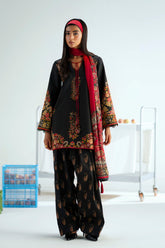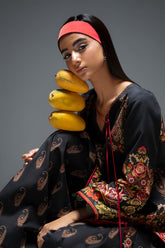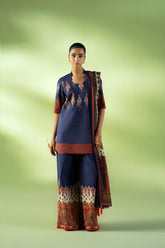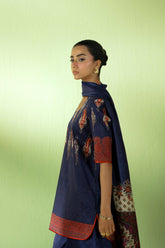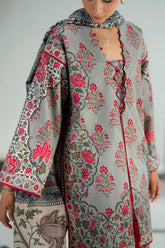Japan Textiles Featuring Luxury Clothing Brands in Pakistan
This is a new dialogue between textile cultures, in times when the meaning behind the cloth as well as the style count just as much as the frame. With one label having emerged as a silent curator, whose fabric knowhow has intertwined with high-end Pak clothing. By showcasing highly edited selections of the finest designers, this iconic shop-style format gives a discerning route to fashionists who crave heritage materials, thoughtful luxury and wearable art.
The whole idea revolves around quality: long-fiber yarns, exacting weave structures and finishes that wear gracefully. Investments are on classic, timeless staples, rather than trend-driven items; think beautifully cut coats, embroidered formalwear and tailored separates to style over the years. Customers who are not interested in impulse purchasing would find the promise much more clear: clothes that would pay back to care and not to the speed.
Skill and craft and material
Luxury is characterized by some small technical decisions Fine modal, hand-loomed silks and, pashmina blends and high-twist cottons all offer varying handles and drape as well as a narrative referring to source and method. The collections put an emphasis on handwork, such as zardozi, gota, and hand-embroidery, typical in the traditional world; this is several times combined with modern silhouettes boxy, shorter jackets, asymmetrical tunics and relaxed palazzo trousers. The outcome is attire that is contemporary, without eliminating handicraft identity.
Designer collaborations and capsules
Instead of an eclectic mishmash, the program stresses controlled capsules: limited editions of harmonious kinds that nucleate over time and place. Designers with a reputation of opulence in weddings may introduce more parings in their evening line and port-a-porter labels may preface capsule lines with lasting staples. The partnerships also help customers achieve a curated shopping experience that is more akin to intimate and editorial instead of impulse driven.
Who this is for
The average patron is quite discerning a person who cares about provenance, the craftsmanship of stitches and the durability of his goods. Either they can be dressing up for major life events ( weddings, corporate milestones) or may simply tend to have a smaller wardrobe with higher quality outfits. Instead, buyers carried out akin shopping experiences as they did in a structured environment like the traditional retail store, where product story, fabric details and recommended pairings make the process of selecting among unfamiliar brands much smoother.
Aesthetics and flexibility
One of the strengths is versatility. Luxury garments are noted styling suggestions to make the day-to-evening transition: Remove the heavy dupatta, crafting a day-friendly look or trade trousers rather than skirts making the garment night-appropriate. Neutral soothing palettes with metallic highlights and monochrome embroideries make layering effortless and detachable details (belts, detachable panels, etc.) offer maximum wear-ability without the need to purchase additional items.
Sustainability, lifecycle thinking
A mindful attitude towards luxury also implies an attitude towards the lifecycle: repair services, refillable packaging, as well as advice on how to best maintain the garment keeping it longer in rotation. Others highlight up-cycled or natural dye-based materials in their collection, which customers will find appealing as having a lesser impact without compromising quality.
Value and pricing
Prices at or near ones that have a premium positioning: above mass-market prices but close to prices of established couture houses. It is not only about the label but also about quality of the fabric, handwork and small-batch production. The investment pieces will typically contain the care instructions and alteration suggestions so that they will fit perfectly and last.
Shopping experience, Customer care
The consultative nature is emphasized in the curated environment Customers are accompanied by stylists to go through the families of fabrics, fit comments and what they should expect of textile aging. To help distant shoppers feel as though they are in the store, close-up pictures, fabric samples, video drape fittings re-create the same in-store browsing experience.
Quick comparison
|
Feature |
Curated Textile Program |
Typical Luxury Brand |
|
Focus |
Fabric-first, cross-designer capsules |
Designer-led seasonal collections |
|
Production size |
Small-batch, capsule runs |
Larger seasonal lines |
|
Signature value |
Emphasis on material provenance |
Emphasis on brand aesthetic |
|
Styling support |
High — fabric notes & pairings |
Varies by boutique |
|
Sustainability |
Often prioritized (repairs, low waste) |
Varies widely |
|
Ideal buyer |
Discovery-minded, values fabric |
Brand-loyal, follows designer language |
Closing stitch
This curated approach to luxury puts the fabric back at the center of fashion conversations. For customers who prize texture, longevity and a considered wardrobe, the model simplifies discovery while elevating the shopping ritual. It’s less about logos and more about the quiet pleasures of well-made cloth — pieces that are chosen thoughtfully, loved longer and pass through seasons with dignity.


